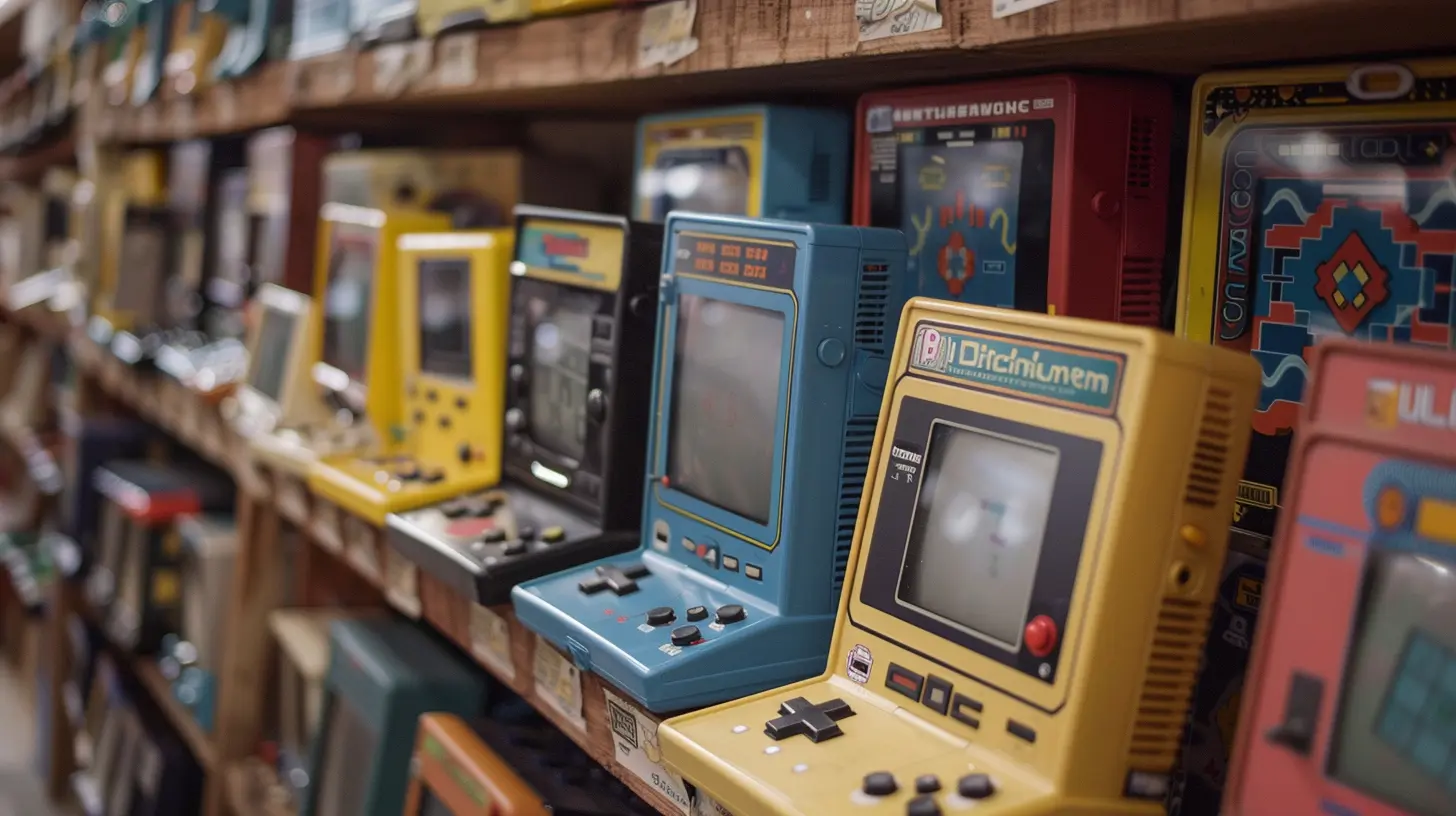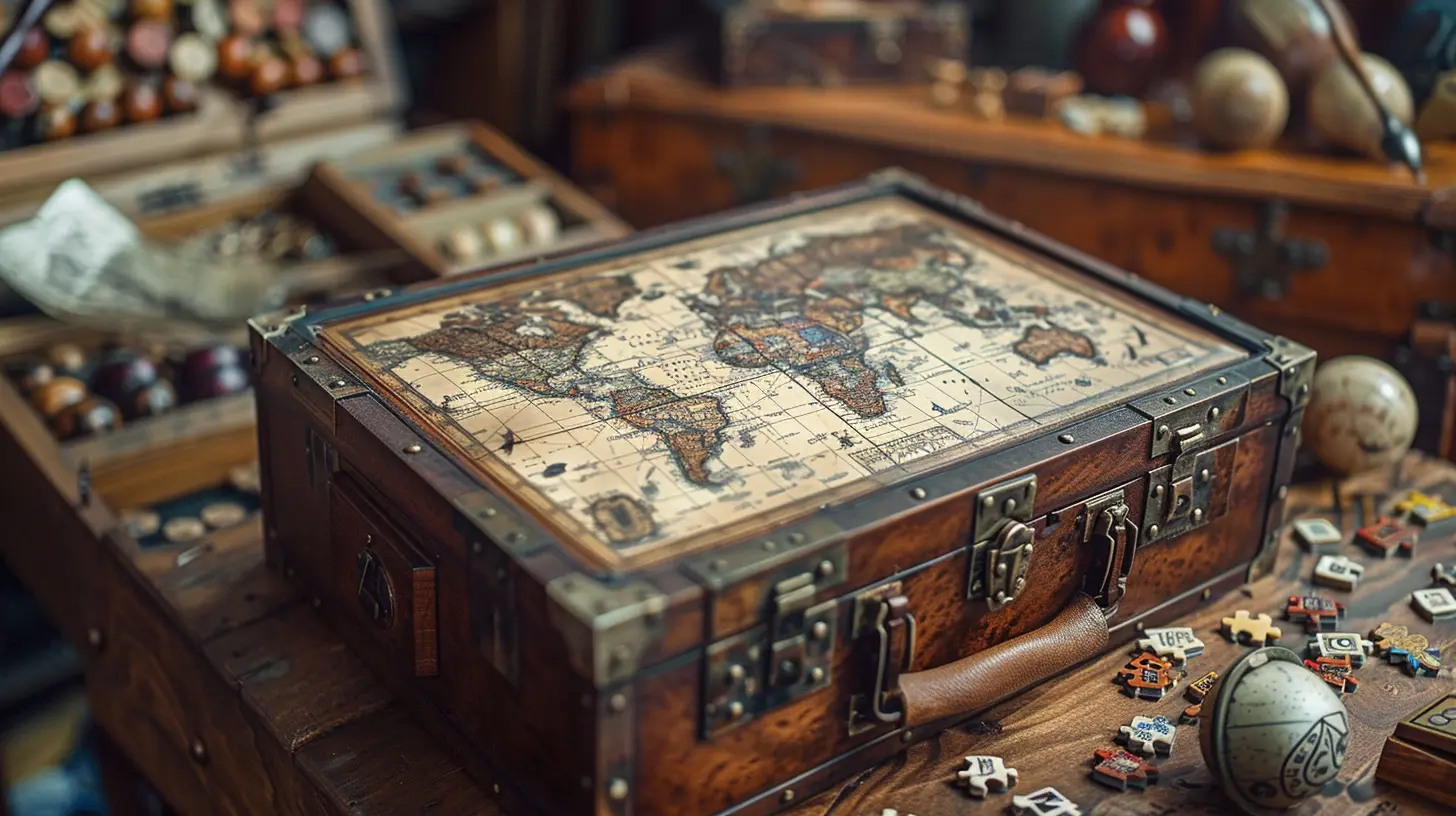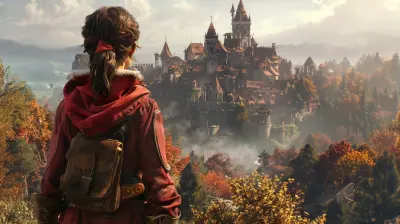Remembering the Rise of Portable Puzzle Games
4 October 2025
Let’s rewind the clock a little.
Before the days of hyper-realistic graphics, multiplayer battle royale madness, and AAA titles with million-dollar budgets, there was a simpler gaming experience that quietly carved its own niche. Portable puzzle games. Remember them?
These gems weren’t just about fun—they were brain food, stress relievers, and time killers rolled into one pocket-sized package. Whether you were hunched over a Game Boy during a long road trip or sliding colorful blocks on your first smartphone, puzzle games have left a mark on all of us.
So let's take a nostalgic dive into the fascinating evolution and impact of portable puzzle games—how they started, what made them explode in popularity, and why they still matter today.
The Birth of a Genre: Puzzle Games Get Portable
When most people think “puzzle,” the first thing that comes to mind is probably a messy jigsaw spread across the dining table. But in the world of gaming, puzzles took on a whole new form—interactive enigmas, brain-teasing challenges, and visual logic games, all packed into compact devices.Early Days: Game Boy and the Tetris Revolution
You can’t talk about portable puzzle games without tipping your hat to Tetris. Released in 1989 alongside the original Game Boy, Tetris wasn’t just a launch title—it was the reason to own a Game Boy.Dropping blocks and scoring lines became an instant obsession, and the game’s minimalist design was a perfect match for the Game Boy’s limited specs. But here's the kicker—it was just as addictive as any arcade hit, proving you didn’t need flashy 3D graphics to get people hooked.
Tetris set the gold standard, and paved the way for countless successors.
The '90s: Rise of the Puzzle Dynasty
After Tetris opened the floodgates, developers went all-in on portable puzzle experiences. Titles like Dr. Mario, Puzzle Bobble (also known as Bust-a-Move), and Wario’s Woods brought variety to the scene. Each game put a unique spin on puzzle-solving:- Dr. Mario had you matching capsules to viruses—classic Nintendo flair.
- Puzzle Bobble introduced the "match and pop" mechanic that would inspire endless bubble shooters.
- Wario’s Woods added a character you could control directly, mixing action with thinking.
These weren’t just games—they were mini mental marathons cleverly disguised as idle fun.
The GBA & DS Era: Puzzles Meet Portability Perfectly
When the Game Boy Advance (GBA) and later the Nintendo DS came into the picture, things got interesting. The hardware improved, the screens got brighter, and developers got bolder.GBA Classics: A Hidden Gem Trove
While the GBA was more famous for RPGs and platformers, it still had a soft spot for puzzles. Titles like ChuChu Rocket! and Kururin series offered mechanics that pushed the limits of what a puzzle game could be in a handheld format.The GBA was like that quiet student in class who'd occasionally come up with something so brilliant, the whole room paused.
Dual Screens, Double The Fun
With the DS, puzzle games found their soulmate. The stylus and touch screen opened up a whole new way to interact with games. No more button bashing—you were literally solving puzzles with your fingertips.A few standout titles? Oh, where do we begin?
- Professor Layton series — Sleek, cerebral, and wrapped in a charming detective story.
- Picross DS — Turned grid-based logic puzzles into an artsy brain workout.
- Meteos — A match-3 game on steroids. Fast-paced, chaotic, and addictive.
The DS was a breeding ground for creativity. It was like someone took a regular jigsaw puzzle, dumped it on your lap, then handed you a stylus and said, “Good luck.”
Mobile Gaming Boom: Puzzles Go Mainstream
Let's be real—once smartphones hit the scene, portable gaming changed forever. And guess what genre stood tall among the chaos? Yep, puzzle games.The App Store Gold Rush
When the iPhone launched in 2007, and the App Store followed in 2008, a revolution began. Developers from all walks of life could throw their hat into the ring. And puzzle games were first in line.Who could forget:
- Angry Birds — Slingshots plus physics equals endless fun.
- Cut the Rope — Adorable, tactile, and dangerously addicting.
- Where’s My Water? — Turned plumbing into an art form.
These games weren’t just popular—they were viral. The kind of games your grandma played, your coworker played, and somehow… you kept going back to.
Free-To-Play and Bite-Sized Brilliance
The mobile space didn’t just make puzzle games more accessible; it made them snackable. Perfect for playing on the train, in a waiting room, or during that awkward lull in a Zoom meeting (don’t worry, we’ve all done it).Games like Candy Crush Saga and Two Dots made it okay to love puzzles—and to shamelessly play just “one more level” while dinner’s burning in the oven.
Why Puzzle Games Click With Us (Pun Very Much Intended)
So, what exactly is it about puzzle games that make them timeless?They're Universally Accessible
Unlike a sprawling RPG or a high-skill shooter, puzzle games don’t care who you are. They don’t need a tutorial the size of a novel. They just toss you in, let you tinker around, and reward you for solving problems.They Scratch That Brain Itch
You know that feeling when you finally solve a level you’ve been stuck on for days? That’s dopamine talking. It’s like solving a real-life mystery—but with pixels and sound effects.They're The Perfect Portable Partner
No need for headphones. No steep learning curve. Whether it’s 2 minutes or 2 hours, puzzle games fit into your life seamlessly. It’s gaming on your own terms.The Indie Invasion: Creativity Unleashed
As mobile and handheld platforms matured, indie developers stepped into the spotlight. And boy, did they bring their A-game.Hidden Treasures and Cult Favorites
Games like:- Threes! — A deceptively simple math puzzle with endless depth.
- Monument Valley — A stunning mix of art, architecture, and logic.
- The Room — An escape-room experience that felt like it should be illegal (it was so good).
These titles didn’t just entertain. They elevated the genre.
And thanks to services like the App Store and Google Play, indie hits could thrive without big budgets or celebrity voices. Just smart design and pure heart.
Puzzle Games In 2024 and Beyond
You might think puzzle games would fade in a world dominated by flashy graphics and high-octane gameplay. But nope—they’ve endured. They’ve evolved.Touch, VR, and Beyond
Now we’ve got puzzle games in virtual reality. Games like Tetris Effect: Connected create an emotional, almost meditative experience. Meanwhile, AR titles are mixing puzzles with the real world. It’s like having Sudoku in a Star Trek holodeck.Subscription Services Keeping the Fire Burning
With platforms like Apple Arcade and the Nintendo Switch’s indie push, puzzle games continue to find new homes. Monthly subscriptions allow developers to take more risks without financial ruin—and that means more unique puzzles for us.Final Thoughts: Not Just Time-Killers, But Timeless
Puzzle games have always stood out because they do more with less. No bombastic cutscenes, no voiceovers, no ultra-HD rendering. Just clever mechanics, thoughtful design, and that magical moment of “Aha!”They've evolved from pixelated blocks on a Game Boy to emotional VR journeys that tickle your brain and tug at your heart. That’s a journey worth celebrating, don’t you think?
So next time you’re scrolling through your phone or dusting off an old handheld console, remember the rise of portable puzzle games. They’re more than just digital Rubik’s Cubes—they’re bite-sized adventures with massive impact.
And honestly? We’re here for it.
all images in this post were generated using AI tools
Category:
Gaming NostalgiaAuthor:

Tayla Warner
